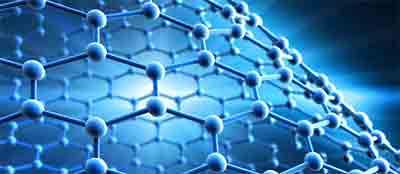What is the Sheet Resistance of Graphene on PET?
A researcher asked:
Can you provide the sheet resistance of graphene on PET samples, large area especially?
2 questions:
a) is 1cmx 1 cm the largest size? Can you provide 5cm x 5cm?
b) Is it possible to have lower sheet resistance (around 100 Ohm/sq max)?
UniversityWafer, Inc. Replied
The Sheet Resistance on PET is 580±50 Ohms/sq (1cm x1cm)
We are am glad to confirm that we can make custom size substrates, in this case 5cm2.
Monolayer Graphene M on PET
G/PET/Custom/M-25
Monolayer Graphene (5 cm x 5 cm) on PET
$ Contact us
Get Your Quote FAST!
What Makes Graphene Useful?
Graphene is a man-made wonder, the name given to a carbon material with many useful characteristics. These properties make it ideal for use in flat electronics, including solar panels, solar chargers, solar windows, medical devices, infrared illumination, and so on. This article discusses the significance of Graphene in flat electronics, which has now permeated all layers of modern devices.

Graphene is one of several topirogen materials that is found on nanometer-scale thin sheets. It has many exceptional features, which have enabled it to become a key ingredient in the development of many electronic and optoelectronic products. Transparent conducting plates (TFCs) are probably the first key technological element in flat electronics. In particular, Graphene has long been considered a practical substitute for thin-film indium tin oxide (ITO), due to its superior electrical conductivity, optical transparency, and very low structural reactivity. The major benefits of Graphene use in TFCs are: better charge carrier mobility, higher bandwidth, and increased device density.
Graphene is made of a unique mix of two carbon sheets. One of these sheets (Glow) consists of a highly conductive crystalline material known as graphite. The other sheet (Woll) contains low conductivity graphite. These two sheets are connected by a cross-link structure.
When a source of light hits the surface of Graphene, it produces an ultraviolet (UV) light photons. These photons are then absorbed by the carbon crystals. The electrons in the cells within the device are knocked loose when this light interacts with the surface. The light can travel in the room if the surface is transparent to the UV light. Because of this property, Graphene is excellent light sources for infrared applications.
In addition to their use as an efficient light source, Graphene is also used in many other ways, such as a semiconductor material for optoelectronic applications. When light strikes a semiconductor material, a current flows through the material. The current travels from one end to the other depending on which way the electrons are flowing. If electrons flow in one direction, current will travel in that direction. If they flow in the opposite direction, the current will run in the opposite direction.
Most materials that have been developed with Graphene have great electrical and optical properties. For example, a common semiconductor found in digital cameras is called Silicon(TM). When a digital photo is taken, the silicon converts the light into electrons, producing a pixel. By using a special type of lens, a computer chip can send a series of binary images, each one having a different color. Because of the way the semiconductor is designed, the colors are produced almost perfectly, thereby achieving sharp, clear images.
Because of the incredible optical and electrical properties of Graphene, they are being increasingly used in computer chips. They are often combined with silicon to make up an integrated circuit. Some researchers even believe that Graphene may be used to create electronic devices with memory capacity equal to that found in human brains. One such device called a Neuron uses just two working neurons to store data. When the device is turned on, it processes the information it receives from the brain by using one eye. Because of their tremendous electrical power, Graphene could potentially be used as one of the keys to the future of artificial intelligence.
As noted above, Graphene is excellent light sources for infrared applications. Because of their electrical nature, they produce tiny particles known as photons. These atoms of light are released as the electrons move, sending the light from the semiconductor material to an electrode. With the use of an infrared camera, the location of the electrode can then be pinpointed. Because of their unique properties, Graphene is ideal for infrared imaging applications, making them ideal for medical and scientific research.

